
ICCROM_ICS03_ReligiousHeritage_en
.pdf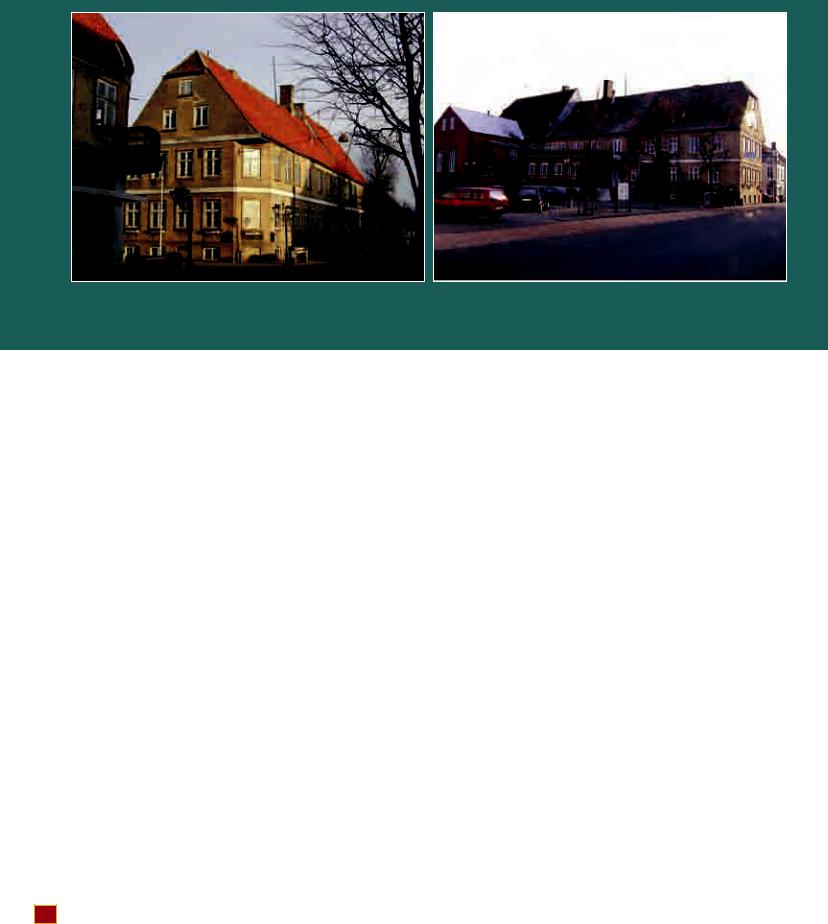
Figure 10 The Moravian Church hotel. To the left a corner of the Spielwerk building can be seen.
Figure 11 The Prætorius Square and the hotel.
strong use-value in the eyes of the congregation. It is less complicated to explain the use and value of this house than many others, because of the obvious need of the pastor for a dwelling.
Prætorius House
This building is located next to Briant’s House, in a prominent position on the church square. Its values are equal to those of Briant’s House, but the use is different. All of the space is rented out as flats for living quarters. Originally, it was built by the first minister and one of the founders of the settlement, and served as a parsonage for a few years before the pastor moved into Briant’s House. As with several other buildings, this house is rented out under normal market conditions. The income is not sufficient to finance the cost of renovating the roof.
Church Square
The church square is the epicentre of the settlement according to ‘the perfect plan’ (Merian 1975: 468), and is clearly the most important square in Christiansfeld. An early painting of 1800 (Turistforeningen 1939: 17) shows the design of the church square, all the important buildings around it, the trees, the fountain in the centre, and the pathways forming a cross. It is the natural meeting point in front of the Saal, for churchgoers, guests and tourists alike. As a ‘town room’, it is well known for its architectural and aesthetic qualities.
In general, the architecture is of high aesthetic value for those living in or visiting a Moravian
town. The idea of the central square as a place for celebration of life, with the church being the obvious focal point, is significant. Equally, the organizational scheme for the other houses on the square, the business and private quarters, and God’s Acre, has many clear aesthetic qualities (Bøytler 2003: 22).
May of the buildings around the square, including the Saal, have been renovated within the last three decades. The value of the square itself to the settlement is beyond dispute. Social and economic pressure on the square is moderate, and design and situation of the square makes its function quite obvious.
Prætorius Square
This area only became a square quite recently. It is situated behind the hotel in the business centre of the settlement, and used to be the backyards of the hotel and other buildings, used for storage and parking. Changes in traffic infrastructure in the 1930s demolished several buildings and left an open space. The design and use of the square is currently under extensive discussion. To most people, it is the very centre of town, surrounded as it is by shops, offices and the hotel.
Prætorius Square is an example of a structure developed through decades of utilization independently of the intentions of the town planners. The pressures from trade and business and from architectural interests are significant. From a preservation point of view the discussion on its future can be followed with mixed feelings, because the original
24 Conservation of Living Religious Heritage
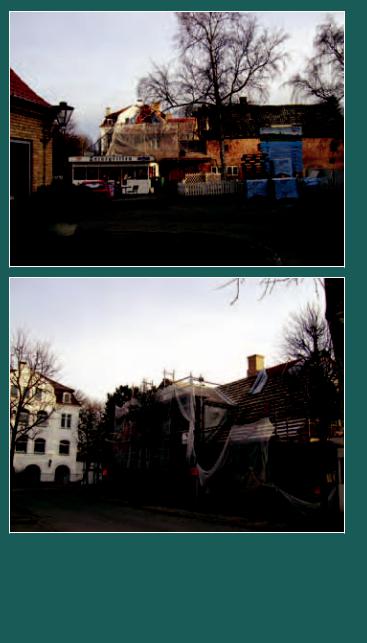
intention of the space is so far away from today’s reality. Social and economic pressures in opposition to the interests of history are very real here. the congregation is generally willing to cater for business interests, but is also aware of the call for aesthetic improvements to the square.
god’s acre,
god’s Acre, the cemetery, is unique in the Danish context. Most Danish cemeteries are connected to the Danish folk Church. god’s Acre is mentioned right from the founding of Christiansfeld. the cemetery is, apart from a few soldiers’ graves, exclusively for the use of members of the congregation. It has an aesthetic value, and obviously a very functional value for the congregation. It is one of several spaces with trees and grass that at one point resulted in Christiansfeld being labelled as ‘the first green city of Denmark’. though slightly exaggerated, this description has much truth in it. the status of god’s Acre is not an issue for discussion at the moment. Its future has generated some interest from the public in ensuring that graves are not removed.4 A few years ago, in a public discussion in Denmark about the right of immigrant Muslims to establish a cemetery, god’s Acre was presented as a parallel example, one where the graves should not be destroyed.
General issues of concern
Relating to Christiansfeld means relating to a complex reality, where few, if any, have the ability to grasp all aspects. yet in working towards the preservation of the settlement, forgetting even one aspect might be fatal. the economy has to be taken into account, as well as the needs of the citizens, the potential of local politicians, the values of the congregation, the cultural heritage, aesthetic and architectural values of the settlement, historical building techniques, the interests of tourists, and the sense of ownership by the various groups and individuals. But perhaps the most important aspect is the changing philosophies that move the process. the settlement is built in modern or even premodern times, but the religious body, a Christian congregation, treasures several qualities deeply rooted in the past, not in a way that romanticizes this past, but in a way that sees it as offering novel solutions to the present. the present post-modern era calls for other ways of dealing with problems. transparency is important, decision processes are industrialised: it is possible to make decisions based on the views of experts whose relation to the project is as long-lived as their paid contract. Responsibility is counted in money, not in history, values or sheer idealism.
FIguRe 12 From the Prætoriussquare. a house is in the process of being restored. the fast-food place will be taken away and the business will be moved into the building.
FIguRe 13 Restoration of Museumsgadeno. 6. the roofing, windows and the wall exterior are being renovated.
It is thought possible to recreate a cultural and social environment by carrying out desk research, mentioning a few statistics, and presuming that the public will be more than happy to participate in the new model of social reality created. this is usually followed by the delivery of a report containing some recommendations, and then the collection of the fee. In other words, an artificial reality has seen the light of day; ‘authenticity’ is fitted into this reality, to whatever degree it is economically or even culturally viable. the cultural heritage is re-created to fit the needs of those people who wish to spend time in an ‘authentic’ environment. the problem is that the cultural heritage has changed into something
2 • Christiansfeld: a religious heritage alive and well |
25 |
|
|
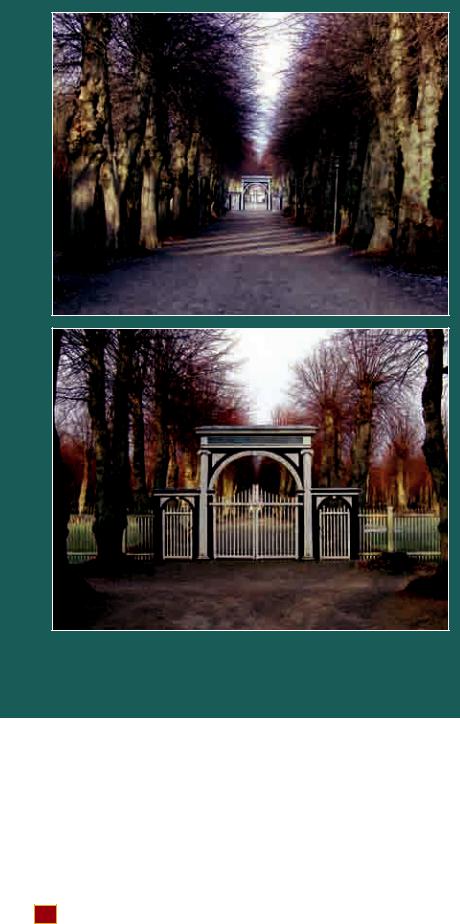
Figure 14 The road to God's Acre, Linden trees on both sides. Linden trees are common in Christiansfeld.
Figure 15 The entrance to God’s Acre.
else in the meantime. Cultural heritage rooted in a religious presumption, or principle, or conviction, is an endangered species. The religious body is part of a game, which it is not well equipped to play. This very body itself is part of the heritage. The values of the religious body might be out of step with the perceptions of the well-meaning public, and the religious cultural heritage might not fit the management culture of the day. In other words, once the religious
dimension, on which a certain religious cultural heritage is founded, is overruled or even overrun by new economic, political and cultural interests, the next generation will inherit something different; what was there is gone forever.
Secularisation of society at large means less understanding of religious values; these are changed into ‘cultural’ values. It is increasingly difficult for a person dedicated to a religiously rooted conviction to make himor herself understood, because such conviction might question the present-day relativism. This development is not, by any means, only negative, but overlooking these facts may have a destructive effect on the religious heritage in question. Cultural heritage has value per se, which is also relative, because all cultural heritage is valuable. As Northern Europe has moved into a post-secular society, religious convictions and pretensions change, new ones develop, and the religious heritage may be conceived differently from how the present-day religious body understands it. The relevant question might be: what could happen to the cultural heritage in that process? The answer might be: the cultural heritage is still cultural, something can still be inherited, but its character has changed. This leads to yet another question: to what extent is authenticity important, or its maintenance possible? Others must answer that question. It is evident, however, that any solution must recognize that those closest to the tangible and intangible values of the cultural heritage are the ones best positioned to take care of and to develop the heritage in question. But other present-day interests must also be acknowledged, and an environment of mutual respect between all stakeholders must be created.
The economy of the settlement is subject to current market forces. Private donations for upkeep are being sought, and Christiansfeld is discussing how to increase the rental value of the houses so that rents will cover maintenance costs. No assistance from the national government has been forthcoming, and the congregation is left to contend with market forces, relying on private funds and the local political administration.
The needs of the citizens include having modern, well-kept, moderately priced apartments, together with shops, schools, health facilities and other necessities in the neighbourhood, and having the satisfaction of living in a culturally interesting and friendly environment. It is long time since a majority of citizens had links to the Moravian Church, so for many the sense of ownership is less directed towards the religious values of the place, than to their own quality of life, including that of living in a peaceful and harmonious neighbourhood.
26 Conservation of Living Religious Heritage
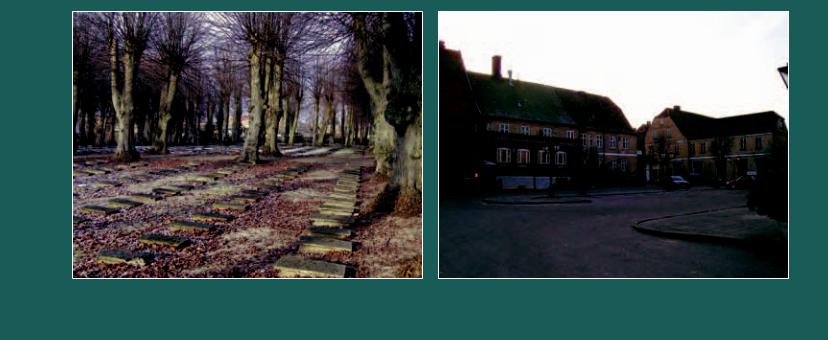
FIguRe 16 From thegod’s acre. newer houses can be seen outsidegod’s acre.
FIguRe 17 Prætorius square, looking towards the southwest.to the left is the hotel, and to the right thespielwerk building.
One of the important factors in Christiansfeld in |
consider the quest of keeping the town alive, is an |
developing a positive view of the heritage is the con- |
important and at times rather time-consuming task. |
structive interaction between the municipal political |
the values of the congregation reflect several |
administration and the Moravian congregation. His- |
intangible factors. As part of the general Christian |
torically the settlement was based on a specific |
conviction (see, for example, Hutton 1999), the |
interest of the Danish king in having a settlement in |
congregation treasures functionality rather than |
the region. the rules of the game were listed in the |
luxury (gollin 1967: 217). this is revealed by the |
1771 concession, and since then the relationship has |
architecture, and by the way in which the tangible |
developed according to the dictates of realpolitik. |
assets are managed. this conviction can collide |
the politicians of Christiansfeld play an important |
with present-day ideas, the development of luxury |
role as facilitators of the current renovation project. |
apartments for wealthy clients for example, or the |
Realities in the local municipal economy limit the |
addition of a gourmet restaurant in the hotel. It is |
scope of economic support for the cultural heritage |
not that wealthy citizens are unwelcome, but that |
to assistance in renovating living quarters.5 Chris- |
such an exclusive approach conflicts with a basic, |
tiansfeld is a comparatively small municipality of |
inclusive, inviting attitude that is deeply rooted |
approximately 9,5006 people and has a comparative- |
in the life of a Christian congregation. In fact, to |
ly large cultural heritage, the preservation of which |
many in this part of the world, cultural heritage |
requires external support. expertise is also needed |
suggests expensive to build, exclusive buildings |
from outside. On the other hand, the identification |
such as castles and churches. But Christiansfeld is a |
of the citizens with their cultural heritage is rather |
cultural heritage built not by wealthy noblemen, but |
strong in this small community. |
by average income craftsmen, traders and workers. |
Christiansfeld is significant as cultural heritage |
Present-day citizens of Christiansfeld are average |
also on a regional and national level. Public attention |
income people; this is perhaps the most important |
to the restoration process is significant, as are efforts |
factor in sustaining it as a living town, and not as |
to preserve the settlement. the trick is to attract |
a museum or a reserve of the privileged. Although |
what could be called ‘qualified attention’ from |
congregational life in Christiansfeld is less signifi- |
‘qualified bodies,’ i.e. from organizations within the |
cant now than in the past, what observers often do |
government administration, as well as those without. |
not register is that it is still alive and active. the |
It is less than helpful when the heritage authorities |
widespread network of Moravians in many parts of |
make a decision based on insufficient knowledge |
the world is adding to its strength and developing |
of the issue. educating the authorities, equipping |
its identity. the congregation understands the |
them to make decisions that serve the interest of the |
settlement as living religious heritage rather than as |
cultural heritage, respect the religious heritage, and |
cultural heritage. this difference in understanding |
2 • Christiansfeld: a religious heritage alive and well |
27 |
|
|
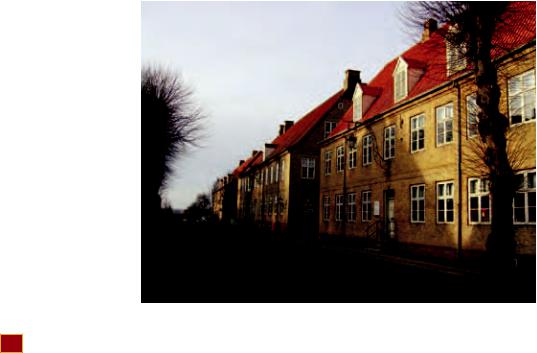
can complicate relations between the congregation |
Conclusions |
|
|
|
|
|
|||
and well-meaning non-Moravians. this difference |
How can the settlement of Christianfeld maintain and |
||||||||
also gives the congregation the important task of |
develop tangible and intangible values in the present |
||||||||
ensuring that it is understood. |
context? there is a shared understanding that: |
|
|||||||
|
the so-called ‘Christiansfeld Initiative’ has |
• Christiansfeld has |
high |
value as |
cultural |
||||
shown, in an encouraging and constructive manner, |
heritage; |
|
|
|
|
|
|||
viable ways of creating a dynamic interaction |
• Christiansfeld is a living town, and should |
||||||||
between the public (the municipality), economic |
continue as such; |
|
|
|
|
|
|||
resources, and the Moravian congregation. the |
• the Moravian congregation is not able, by its |
||||||||
‘Christiansfeld Document’ of September 2000, which |
own means, to carry the economic burden of |
||||||||
was a result of the first Christiansfeld Conference, |
restoring the houses, and should be assisted in |
||||||||
served several objectives: the definition of strategic |
doing it; |
|
|
|
|
|
|||
approaches enabling all stakeholders in Christians- |
• the public, the society, has a responsibility to |
||||||||
feld to maintain the Moravian heritage values, envi- |
assist in furnishing the means of the restoration |
||||||||
ronment and relationships in the living town; and |
work. |
|
|
|
|
|
|||
an exchange of information with other communities |
Opinions largely differ on: |
|
|
|
|
||||
facing similar issues elsewhere. |
• the understanding of the importance of intangible |
||||||||
|
A partnership was formed to focus on planning |
values in relation to tangible assets; |
|
|
|||||
and implementation of renovation works in the town |
• how to maintain the idea of a living town with its |
||||||||
at large, on the promotion of Christiansfeld and its |
cultural (architectural and aesthetic) values intact |
||||||||
Moravian heritage, and to seek funds to undertake the |
in the face of commercial interests. |
|
|
||||||
necessary work (Christiansfeld document (in Danish), |
the process of securing Christiansfeld for the |
||||||||
Sep 2000). It has had the two following results so |
future will be long and complicated. In order to move |
||||||||
far: |
forward it is important that a common understand- |
||||||||
1) funds for beginning the renovation activities |
ing is reached on the aim of the process, the fabric of |
||||||||
|
have been obtained, and a partnership agreement |
the religious heritage including its intangible values, |
|||||||
|
signed between the donor ‘fonden RealDania’7 |
the precise definition of the cultural importance of |
|||||||
|
and the Moravian congregation. the funds are |
the heritage, and the tasks and responsibilities of |
|||||||
|
being used for preservation planning and for |
the stakeholders. the key idea is that the Moravian |
|||||||
|
renovating selected parts of the settlement. |
settlement, including its tangible and intangible |
|||||||
2) A network of cities worldwide that have been |
values, is an important cultural asset that should be |
||||||||
|
initiated or founded by Moravians has been |
safeguarded for future generations. |
|
|
|
||||
|
established. the Danish government has provided |
this process will be furthered through a |
|||||||
|
seed funding. |
dialogue between the stakeholders, by the presence |
|||||||
|
|
|
|
of |
financial |
support without |
|||
|
|
|
|
||||||
FIguRe 18 |
|
|
|
qualifications that |
might be |
||||
|
|
|
|||||||
view to the west |
|
|
|
unacceptable, and through a |
|||||
along nørregade. |
|
|
|
dialogue between the experts |
|||||
From right to left: |
|
|
|
and the citizens, including the |
|||||
the former girls’ |
|
|
|
congregation. the |
access to |
||||
school, now a |
|
|
|
reliable scientific information |
|||||
public library; a |
|
|
|
and to experiences gained in |
|||||
house owned by the |
|
|
|
similar religious and cultural |
|||||
Municipality; the |
|
|
|
contexts is important. |
|
||||
sisters' house; and |
|
|
|
|
A preliminary conclusion |
||||
the Widows' house. |
|
|
|
at this time (late 2003) is that |
|||||
|
|
|
|
when public |
authorities |
and |
|||
|
|
|
|
the religious body maintain- |
|||||
|
|
|
|
ing the heritage join forces, |
|||||
|
|
|
|
and assuming they agree on |
|||||
|
|
|
|
important |
principles, |
this |
|||
|
|
|
|
optimizes the chances of pres- |
|||||
|
|
|
|
ervation. |
furthermore, |
the |
|||
|
|
|
|
interaction between the public |
|||||
|
|
|
|
and the religious body seems |
|||||
|
|
|
|
||||||
|
|
|
|
||||||
28 conservaTion of living religious heriTage

to create a deeper understanding among all partners of the heritage values, including tangible forms and intangible values.
the understanding of what constitutes cultural heritage should in this case be tempered by an understanding of religious values. this calls for a trans-dis- ciplinary8 approach to the discussion. the sustainable partner in this discussion, and in the follow up action is, the Moravian congregation. the best sources of assistance in the exercise of securing the religious heritage include the municipality, private9 and public funds.
Bibliography
Bøytler, J. (2003), Moravian values and Moravian towns
(Christiansfeld: Denmark).
Concession for Christiansfeld (1771), original document in the Moravian Archive, Christiansfeld.
engquist, H. H. (1984), in A. P. thyssen (ed.), Herrnhutersamfundet i Christiansfeld (Åbenrå: Historisk Samfund for Sønderjylland).
gollin, gillian Lindt (1967), Moravians in two worlds, a study of changing communities (New york: Columbia University Press).
Hamilton, J. t. and Hamilton, k. g. (1967), History of the Moravian Church. The renewed Unitas Fratrum 1722–1957
(Bethlehem, Pa: Interprovincial Board of Christian education, Moravian Church in America).
Hutton, J. e (1909), A history of the Moravian Church, 2nd edn.
(London: Moravian Publication Office).
Høy, f. C. (1956), Christiansfeld i fortid og nutid samt en kort fremstilling af Brødremenighedens tilblivelse og udbredelse, Christiansfeld, Denmark.
kjærgaard, t. and kjærgaard, k. (2003), Ny Herrnhut i Nuuk 1733–2003 (Nuuk, greenland: Ilisimatusarfik University of greenland).
Lov om byfornyelse: jf. lovbekendtgørelse nr. 897 af 25. september 2000 med de ændringer, der følger af lov nr. 1255 af 20. december 2000.
Merian, Hans (1975), ‘einfuhrung in die Baugeschichte der evangelishen Brudergemeinen ausgehend vom Modell der gemeine Herrnhaag’, in Mari P. van Buijtenen, Cornelis Dekker and Huib Leeuwenberg (eds.), Unitas fratrum: Herrnhuter Studien (Utrecht: Rijksarchief), 467–8.
Schempp, Hermann (1969), Gemeinschaftssiedlungen auf religiöser und weltanschaulicher Grundlage (tübingen: Mohr).
turistforeningen for Christiansfeld og Omegn (1939), Christiansfeld i fortid og nutid og en kortfattet historie om Brødremenigheden (Christiansfeld: Denmark).
Varming, J. C. (1984), in A. P. thyssen (ed.), Herrnhutersamfundet i Christiansfeld (Åbenrå: Historisk Samfund for Sønderjylland).
endnotes
1Saal is a german term commonly used for the Moravian Church building. the basic design dates back to the church buildings of the ancient Moravian Church, founded in Bohemia in 1457.
2the expression Choir Saal is used for a Saal in a Choir House. these Saal were used for meditative and liturgical activities by the dwellers of the particular Choir House.
3gemeinlogi is a german word referring to the hostel or
guesthouse of the congregation. Later on, in 1854, it was called a hotel, reflecting the fact that guests without any particular relation to the Moravian congregation were invited to stay.
4the normal state of affairs in Denmark is that graves are kept for a number of years, and when eventually the family decides to stop keeping and decorating the grave, or if the family simply disappears for any reason, the grave is cancelled, and can then be used for a new burial. the graves at god’s Acre are never cancelled.
5See http://www.retsinfo.dk/DeLfIN/HtML/A2001/0013529. htm.
6See: http://kommunefakta.netborger.dk/produkt/kfv3/ dinkommune_resultat.asp?=netborger&komid=509#gruppenr1.
7‘fonden RealDania’ is a foundation, the result of a fusion between the credit association (or building society) Realdanmark and the Den Danske Bank. the main
undertaking of the foundation is to support courses of public utility.
8See http://perso.club-internet.fr/nicol/ciret/english/charten. htm (Charter of trans-disciplinarity, especially Articles 7- 10). I am aware of the relativistic nature of the concept of trans-disciplinarity, but in the common interest of humanity for preserving a cultural heritage as Christiansfeld, transdisciplinarity is a useful tool. theology can have a dialogue with other sciences, while still upholding its truth.
9the foundation ‘foreningen RealDania’ is currently sponsoring phase 1 of the Christiansfeld renovation project.
2 • Christiansfeld: a religious heritage alive and well |
29 |
|
|

3
Since its introduction to Sri Lanka in the third century BC, Buddhism has been an
essential component of the living traditions of most Sri Lankans, and continues to be so. From the time of his birth and enlightenment in the sixth century BC, the Lord Buddha, his teachings (Dhamma), the order (Sangha), and the associated heritage have continued to live into the present. They are being protected, worshipped and followed by present generations.
Under colonial rule (1815–1948) traditional heritage protection practices (and even the notion of heritage) disappeared, and the newly-introduced ideas of archaeology and conservation began to play a major role in protecting Buddhist heritage sites, as well as other heritage sites. Despite moving toward formal conservation, in the beginning of the twentieth century the public began to restore religious edifices neglected for many years for other reasons – as a means of regaining their lost identity and, more importantly, to re-use them as places of worship. The colonial rulers had a mixed reaction towards this. After independence in 1948 demand for the use and ownership of religious heritage places increased, and so did their restoration. Sri Lankan professionals, who had welcomed international developments in conservation, were compelled to respond to the demands of the public to facilitate the religious use of, and practices on, Buddhist heritage sites. By trying to respond to these challenges, Sri Lanka has gained unique experience in reconciling religious use and practices with modern ‘conservation’ needs, and this is illustrated through several case studies.
Thereafter he placed in charge Loke Arakmen (Chief Conservator of Monuments) who was there present, and offered him also (to the Ruvanweli stupa). Enjoining on him to restore the Mirisaweti and other viharas, he (the king) gave him unlimited wealth and thus beautified the city as it was in former time, like the city of gods.
Thirteenth century inscription from Sri Lanka
[Gamini Wijesuriya]
The past is in the present
perspectives in caring for Buddhist heritage sites in Sri Lanka
During the last century, conservation principles of the western school were applied all over the world, with little or no concern for the diversity of heritage
or cultures. Those principles were developed at a time when they were required, and served their purpose, and their expansion in the light of the diverse issues confronted by conservation professionals was also a need of the day.
The past plays a major role in Buddhist communities, inspired by the religion itself (Wijesuriya 2003: 276). As expressed in the title of this paper, it will be shown that the past is ‘living in the present’ within the Buddhist context as a whole, a principle equally applicable to heritage. The idea of ‘livingness’ embedded in the religious heritage is synonymous with continuity, which is also a fundamental premise of conservation. The most important phenomenon of
30 Conservation of Living Religious Heritage
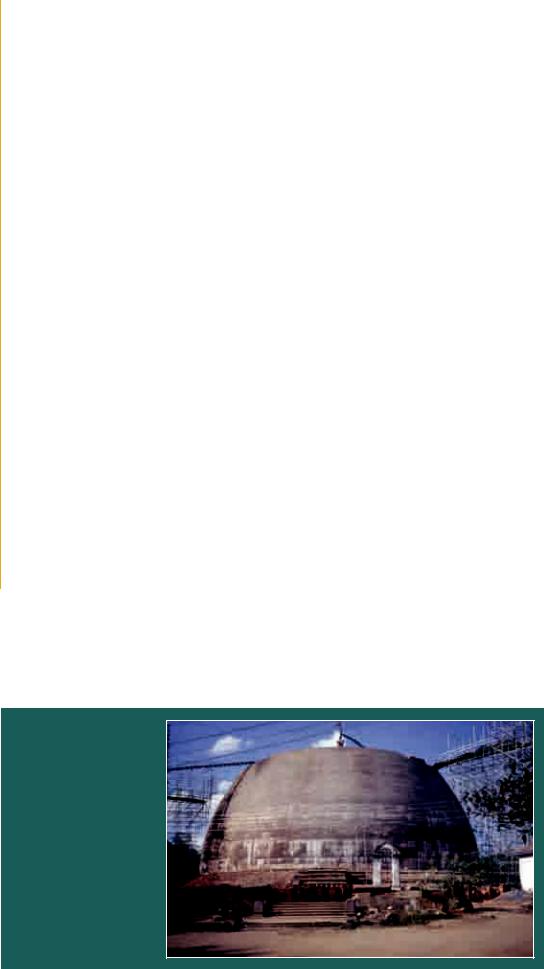
this continuity is the survival of the original values and the associated communities of this heritage. The existence of continuity, original values and associated communities has greater implications for the conservation of religious heritage than for other types of heritage. For most other types of heritage we need to assign or recognise values, and identify communities for their protection, or to ensure their continuity for the future. Here the religious community does that for itself.
Sacredness is the inherited value that makes religious heritage different from other types of heritage. Recognition of these implications, and the development of appropriate principles, is required to maintain a balance between conservation needs and the accomplishment of the needs of religious communities. This paper attempts to illustrate this need by looking at Buddhism, and at several examples of the conservation of Buddhist heritage sites in Sri Lanka.
Buddhism is one of the earliest of the world’s major religions, beginning in India in the sixth century BC with the enlightenment of Prince Siddhartha. Buddhism was introduced to Sri Lanka in the third century BC, from which time it was protected and propagated, creating a wealth of cultural heritage. As a result, a large proportion of Sri Lankan cultural heritage (including four of the six World Heritage Sites) belong to Buddhist traditions. History reveals an illustrious past devoted to the continuous care of Buddhist religious heritage (embracing restoration, repair and also new construction), much of which began to disappear with European colonial occupation in the nineteenth century. From this time, a centralised, government-controlled, European heritage management model (Wijesuriya 2003) was introduced and extended to Buddhist heritage sites that had been neglected for centuries, as well as to other heritage sites. Simultaneously, however,
Figure 1 Restoration work starting on the Mirisaweti stupa at Anuradhapura
the Buddhist community continued to care for its heritage, independently of government actions. The colonial government had a mixed reaction to this, and preferred heritage conservation to remain under government control, enacting strong legislation for this purpose. However, there were occasions when the government supported restoration of religious buildings.
After independence from colonial rule in 1948, the pressure from the public to use Buddhist heritage places for religious use and practices began to increase. This was a new challenge to those professional conservators who followed the European model, while serving the government. However, the living religious flavour of the heritage has to be considered a key element of the massive conservation programme undertaken in the country over the last half century. Although the professionals had to work within the framework of strong legislation and international norms, it will be shown that religious importance became the determining factor in conservation decision-making, thereby compelling the use of a bottom-up approach.
A review of sources already available on this subject forms the next part of this paper. Buddhist literature and other relevant sources are then examined in order to understand the nature of Buddhist heritage, the continuity or conservation ideals that exist in Buddhism itself, and their applicability to Buddhist heritage. While this will highlight the special nature of the religious heritage, case studies will show how a balance between modern conservation needs and religious requirements has been met.
Sources
The main source for this paper is the work of the Department of Archaeology of the Government of Sri Lanka, from its inception in 1890. Its records, both written and graphic, and mostly published, have formed a massive database available for scholarly work on the subject.
Although the Department was started as a survey for recording monuments, issues related to the protection of living religious heritage had surfaced at very early stages.
In 1890 the British colonial government of Sri Lanka invited F.R. Oertel to prepare restoration plans for sacred monuments in the country. Oertel subsequently wrote that ‘with the recent revival of Buddhism, it is natural that its votaries should desire
3 • The past is in the present |
31 |
|
|
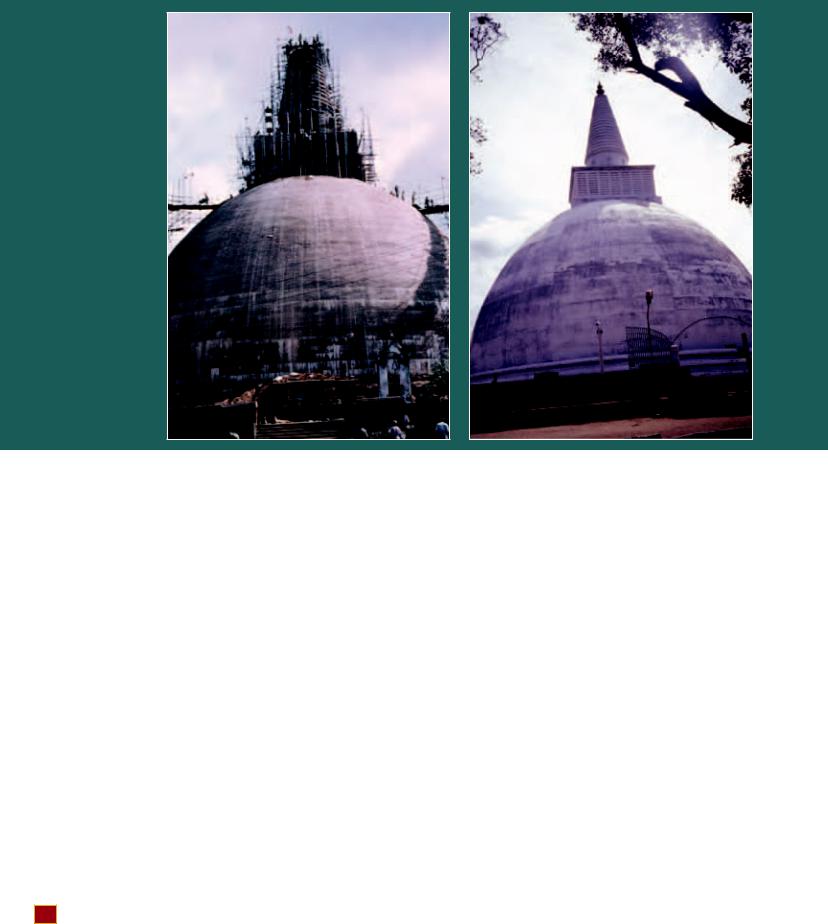
FIguRe 2 Work in progress on the exterior of the Mirisaweti stupa
FIguRe 3 the Mirisaweti stupa after the
completion of the restoration
to have at least one of their historical shrines at their sacred city restored as near as possible to its original appearance’ (Oertel 1895). He was referring to the ruins of the sacred city of Anuradhapura, which date from the third century BC to the eleventh century AD.
even before independence, the Department had recognised the need for sensitivity in dealing with religious heritage. this was at a time when strong legislation had been introduced by the colonial government to control interventions on religious buildings. In 1945 Paranavitana, the first Sri Lankan to head the Department of Antiquities, wrote that such interventions had to be carried out without hurting the religious susceptibilities of the people, and that there was a need to convince the religious authorities that intervention by the Department did not affect their vested interests and traditional rights (Paranavitana 1947). Conservation principles had been developed to meet this situation.
this consciousness of the religious flavour of heritage under the care of the government continued throughout the history of the Department. godakumbura, Head of the Department during 1960 and 1961, acknowledged that most of Sri Lanka’s monuments were inseparably tied up with the
religion of the majority of the citizens. the UNeSCO sponsored Cultural triangle Project had the principle of caring for religiosity at the top of its agenda and stated that ‘these sites will have to be considered as religious sites with monks and pilgrims playing their part in religious establishments’ (Silva 1990: 235).
Legislative provisions of 1940 reflect the importance given to religious sensitivity:
Any person who does in, upon, to, near, or in any respect of any ancient monument which is held sacred or in veneration by any class of persons, any act which wounds or offends or is likely to wound or offend the religious susceptibilities of the class of persons by whom such ancient monument is held sacred or in veneration shall be guilty.
(anTiquiTies orDinance 1940)
Roland Silva’s work, in his capacity as the principal conservator for the Department for 30 years, followed by my own work over 17 years, reflects the continuity of the tradition of treating living religious heritage in a special manner. Wijesuriyah (2001b) examines the views on conservation held by both archaeologists and conservators, comparing them with the conserva-
32 conservaTion of living religious heriTage
tion of Buddhist heritage in Sri Lanka, understood as a living religious heritage. the study revealed the relevance of religio-political influences on the conservation of religious heritage, the significance of user values, and the fact that restoration is inevitable in some cases. Questions were raised about the emphasis on materials, as against other intangible values of this heritage. Subsequently, I highlighted the loss of documentary value where work was undertaken by the public, noting that the public were usually labelled as ‘pious vandals’ by professionals working on the restoration of Buddhist monuments (Wijesuriyah 2001a). However, one main question remained unanswered at that time, which I propose to answer today: what about the user values of religious buildings as opposed to the documentary values?
finally with regard to sources, Buddhist literature itself contains numerous guidelines for the planning and conservation of Buddhist monastic architecture. there are numerous inscriptions dating back to the third century BC, first written in Brahmi scripts and later in the Sinhala language, and occasionally in Sanskrit. Chronicles, including the Mahavamsa written in the fifth century AD, are also a source of inspiration on monastic architecture and its restoration.
Buddhist Heritage
In Buddhism, there are references to the Buddhas of the past, as well as to those of the future. the Sakyamuni Buddha, born in Nepal in the sixth century BC as Prince Siddhartha, and who attained enlightenment, belongs to the present. It is acknowledged that the demise of the Buddha took place in the same century, but this does not prevent followers from recognising that he is the Buddha of the present. His teachings, known as Dhamma, are current all the time, and his order of Sangha monks is the living legacy of the Sangha of the past. the Buddha, Dhamma and Sangha, known as the triple gems, constitute the very core of the religion and have continued from generation to generation. this continuity was not limited to the triple gems, but also included those establishments, including monastic ones, that fostered the religion for centuries. It is in this context that one has to understand the Buddhist heritage.
Buddhist heritage can be understood in three categories: intellectual, intangible and tangible. the intellectual heritage is the plethora of writings containing the teachings of the Buddha, as well as commentaries and other literature added to the original work. All those written in the Pali language, and some in Sanskrit, are said to have originated in Sri Lanka, and will not form part of the present study. this study will explore the tangible and intangible (mostly inseparable) heritage created to support
and sustain the religious establishments, most of which are considered sacred by the followers of the faith. these range from the early sites associated with the birth, enlightenment, and death of the Buddha, to ritual buildings of different forms, and to the monastic remains. Some of these are in a ruined condition, while others are still being used. In addition, there are iconographic materials such as sculptures and paintings.
for the purpose of this discussion, it is important to understand the patronage given by the religion itself to the creation and protection of the heritage. In the second week after enlightenment, the Buddha paid tribute to the peepal tree, Ficus religiosa, now known among Buddhists as the Bodhi tree, which provided shelter for him to attain the Buddha-hood by gazing at it for one week. During his lifetime, when devotees requested a symbol to represent the Buddha while he was away, he advocated the Bodhi tree be worshipped. this led to the planting of Bodhi trees in temples and to shrines evolving around them. these shrines later became one of the most significant ritual buildings within a Buddhist monastery, and were known as Bodhi tree Shrines. A sapling of the original Bodhi tree, under which the Buddha attained enlightenment, was brought to Sri Lanka in the third century BC, and is still regarded as one of most sacred objects of worship.
Similarly, the Buddha advocated the worship of bodily relics of himself and his followers who attained higher status in religious life, called Arahant. this led to the development of another unique architectural tradition: stupas. these were built to enshrine relics and became permanent features of Buddhist monasteries. Under no circumstances could attempts be made to remove the relics once enshrined, although continued care for the stupa was necessary. the concept of the stupa was introduced from India, but its architecture reached a status in Sri Lanka far beyond its counterparts in the former country. the largest stupas built in the Buddhist world are found in Sri Lanka. the stupa is still the most significant ritual symbol of Buddhist monasteries in this part of the world, and is still being constructed in monasteries:
A cetiya (stupa) should be treated as a living Buddha. All the respect and honour that one pays to the Buddha should be paid to the cetiya as well.
(rahula 1956: 284)
In addition, there were several buildings advocated by the Buddha for ecclesiastical, ritual and living purposes. Living in the right atmosphere,
3 • the past is in the present |
33 |
|
|
